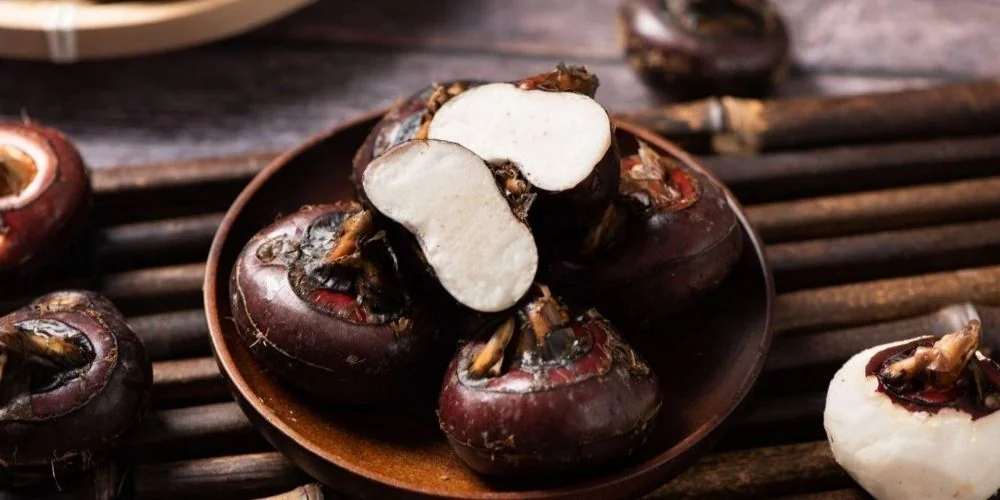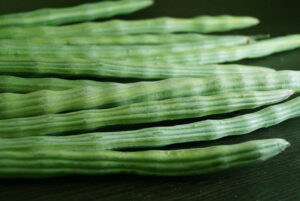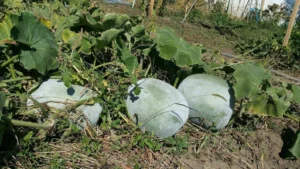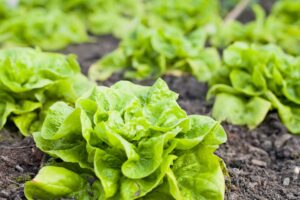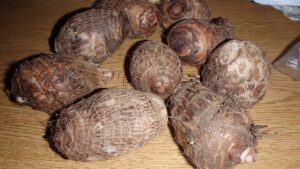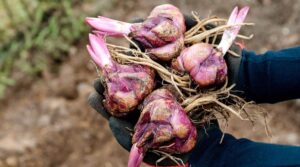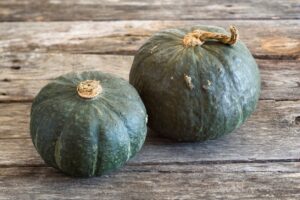How to Grow Water Chestnuts: A Complete Guide
Water chestnuts (Eleocharis dulcis) are aquatic vegetables prized for their crisp texture and sweet, nutty flavor. Despite their name, they aren’t actually nuts but rather corms that grow underwater in marshy conditions. If you’ve ever enjoyed the distinctive crunch of water chestnuts in your favorite Asian dishes and wondered about growing them yourself, you’re in luck! With the right conditions and a bit of patience, you can successfully cultivate these versatile vegetables at home.
What Are Water Chestnuts?
Before diving into cultivation methods, it’s important to understand what water chestnuts actually are. Native to Asia, water chestnuts are sedge plants that produce edible corms beneath the water’s surface. These corms—the part we eat—are round, about the size of a chestnut, with a brown skin and crisp white flesh. Water chestnuts maintain their signature crunch even when cooked, making them a popular ingredient in stir-fries, curries, and other dishes.
According to the USDA Natural Resources Conservation Service, water chestnuts (Eleocharis dulcis) are considered non-native to the United States but can be cultivated successfully in many regions, particularly USDA hardiness zones 8-11.
The U.S. Market for Water Chestnuts
The U.S. market for water chestnuts has been steadily growing as American consumers become more familiar with Asian cuisines. Most water chestnuts found in U.S. grocery stores are imported, either canned or occasionally fresh. This presents an opportunity for home gardeners and small-scale farmers to grow their own or potentially supply local markets with fresh, locally grown water chestnuts.
Fresh water chestnuts command a higher price than canned varieties and offer superior flavor and texture. By growing your own, you can enjoy this premium product at a fraction of the cost while ensuring they’re cultivated using your preferred methods.
Growing Water Chestnuts: Location Options
Water chestnuts can be grown in several settings, depending on your available space and resources. Here are your main options:
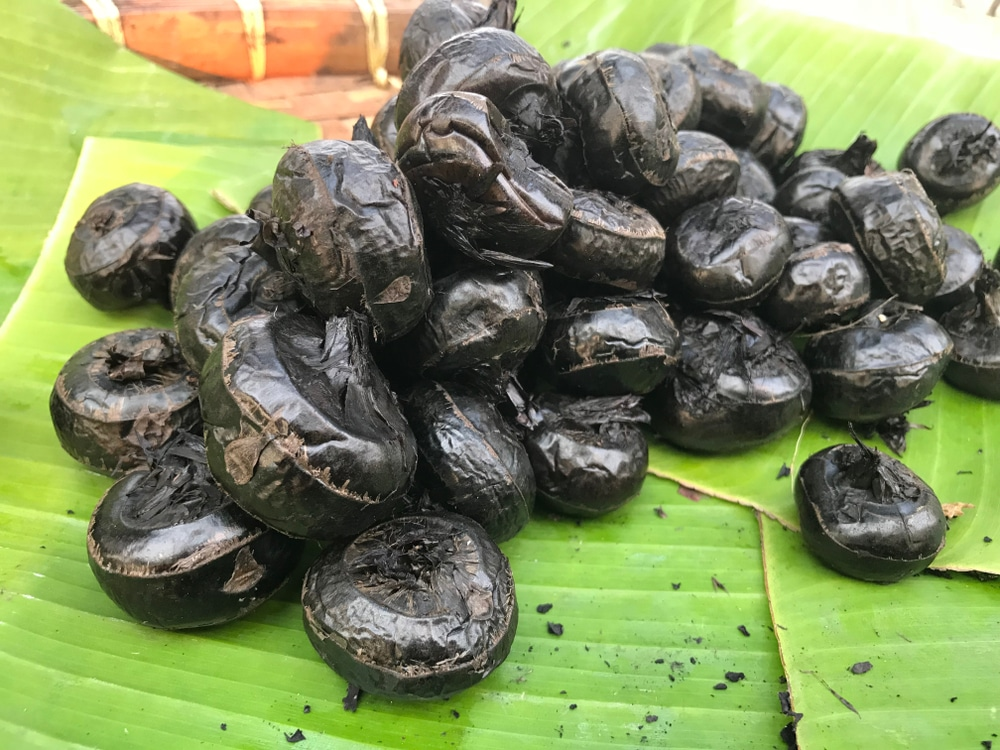
Garden Pond or Water Feature
If you have a garden pond or water feature, this provides an ideal environment for water chestnuts. They thrive in shallow water (about 4-6 inches deep) with muddy bottoms.
Dedicated Growing Beds
You can create dedicated growing beds specifically for water chestnuts. These should be designed to hold water consistently throughout the growing season.
Container Growing
Don’t have a pond? No problem! Water chestnuts can be successfully grown in containers on your patio, balcony, or even indoors near a sunny window.
What You’ll Need for Growing Water Chestnuts
Before you begin, gather these essential supplies:
- Water chestnut corms (seeds)
- Containers (if not using a pond)
- Heavy clay soil or garden soil mixed with clay
- Fresh, clean water
- Fertilizer (aquatic plant fertilizer is ideal)
- Access to full sun location
Growing Water Chestnuts in Containers
Container growing is one of the most accessible methods for most home gardeners. Here’s how to grow water chestnuts in pots:
Step 1: Select the Right Containers
Choose containers that are:
- At least 12 inches deep
- At least 16 inches in diameter
- Without drainage holes (or with plugged holes)
Large plastic buckets, half barrels, or dedicated planting tubs work well. The key is having a container that will hold water.
Step 2: Prepare Your Growing Medium
Fill your containers with:
- 6-8 inches of heavy garden soil mixed with clay
- The soil should be rich in organic matter
Step 3: Plant Your Water Chestnuts
- Soak your water chestnut corms overnight before planting
- Plant each corm about 2 inches deep in the soil
- Space corms about 6-8 inches apart
- For a standard 16-inch container, plant 4-5 corms
Step 4: Add Water
Carefully add water to your container until it reaches about 2-4 inches above the soil level. The water should be clean and free of chlorine (if using tap water, let it sit out for 24 hours before using).
Step 5: Position Your Container
Place your container in a location that receives:
- At least 6 hours of direct sunlight daily
- Protection from strong winds
- A stable temperature (water chestnuts prefer warm conditions)
Step 6: Maintain Proper Growing Conditions
Throughout the growing season:
- Maintain water level 2-4 inches above soil
- Replace evaporated water regularly
- Feed plants with aquatic plant fertilizer monthly
- Monitor for pests and diseases
Growing Water Chestnuts Indoors
Yes, you can grow water chestnuts indoors! This method works particularly well for gardeners in colder climates. Here’s how:
Indoor Growing Requirements
- Location: Place your container near a south-facing window where it will receive at least 6 hours of direct sunlight. If natural light is insufficient, supplement with grow lights.
- Temperature: Maintain room temperature between 70-85°F (21-29°C) for optimal growth.
- Humidity: Water chestnuts appreciate humidity. Consider using a humidity tray or room humidifier if your indoor air is dry.
- Container Size: Follow the same container recommendations as outdoor growing, but consider the weight of your setup (water is heavy!) and use a waterproof tray underneath.
- Water Quality: Use dechlorinated water and change about 25% of the water every two weeks to prevent stagnation.
Growing Water Chestnuts from Seed (Corms)
Whether growing indoors or out, starting water chestnuts from corms follows the same basic principles:
Finding Water Chestnut Corms
You can source water chestnut corms from:
- Specialty nurseries and online suppliers
- Asian grocery stores (look for fresh, firm corms)
- Farmer’s markets in some regions
When selecting corms for planting, choose those that are:
- Firm and heavy for their size
- Free from soft spots or mold
- Ideally with small sprouts already forming
Preparing Corms for Planting
- Select healthy corms as described above
- Soak the corms in clean water for 24 hours before planting
- If needed, you can store unplanted corms in the refrigerator for up to 2 weeks
Best Planting Time
In most U.S. regions, plant water chestnuts:
- Spring, after all danger of frost has passed
- When water temperatures remain consistently above 65°F (18°C)
- Usually May-June, depending on your region
Growing Timeline for Water Chestnuts
| Growth Stage | Timeframe | Care Needs | Observations |
|---|---|---|---|
| Initial Planting | Day 0 | Plant corms 2″ deep in soil, add 2-4″ of water | Corms should be sprouting from pre-soaking |
| Germination | 1-2 weeks | Maintain water level, ensure adequate sunlight | First shoots emerge from soil |
| Early Growth | 2-4 weeks | Begin light fertilization | Grass-like shoots grow taller |
| Active Growth | 1-3 months | Regular fertilization, maintain water level | Plants reach 2-3 feet in height |
| Maturation | 4-7 months | Reduce fertilization | Plants begin to yellow slightly |
| Harvest | 7-9 months | Drain water, harvest corms | Plants fully yellow and die back |
Caring for Water Chestnuts

Water Requirements
Water is obviously crucial for water chestnuts. Maintain consistent water level 2-4 inches above the soil throughout the growing season. In hot weather, you may need to add water every few days to compensate for evaporation.
Fertilization
Water chestnuts are moderate feeders:
- Use aquatic plant fertilizer, following package directions
- Apply fertilizer monthly during the growing season
- Reduce fertilization when plants begin to yellow in late summer/early fall
Pest and Disease Management
Water chestnuts are generally resistant to most pests and diseases, but watch for:
- Aphids: Can sometimes infest the above-water portions of plants. Treat with insecticidal soap or a strong spray of water.
- Algae: Can become problematic in containers. Prevent by changing some of the water periodically and avoiding over-fertilization.
- Root rot: Can occur if corms are planted too deeply. Ensure corms are planted at the proper depth.
According to the USDA Agricultural Research Service, maintaining good water quality is key to preventing most water chestnut growing issues.
Harvesting Water Chestnuts
The most satisfying part of growing water chestnuts is the harvest!
When to Harvest
Water chestnuts are typically ready to harvest when:
- The plants begin to yellow and die back
- This usually occurs 7-9 months after planting
- In most U.S. regions, harvest falls between October and December
Harvesting Process
- Drain the water from your container or growing area
- Allow the soil to dry slightly (but not completely)
- Carefully dig into the soil and extract the corms
- Rinse the corms thoroughly to remove all soil
- Set aside the largest, healthiest corms for replanting if desired
Expected Yield
From a single corm, you can expect to harvest 5-15 new corms, depending on growing conditions. A 16-inch container with 4-5 initial corms can yield 20-75 water chestnuts.
Storing Fresh Water Chestnuts
To preserve your harvest:
- Keep unpeeled water chestnuts in a plastic bag in the refrigerator for up to 2 weeks
- For longer storage, peel and freeze them in airtight containers for up to 6 months
- Can them using a pressure canner following safe canning procedures
- Dehydrate sliced water chestnuts for a crunchy snack
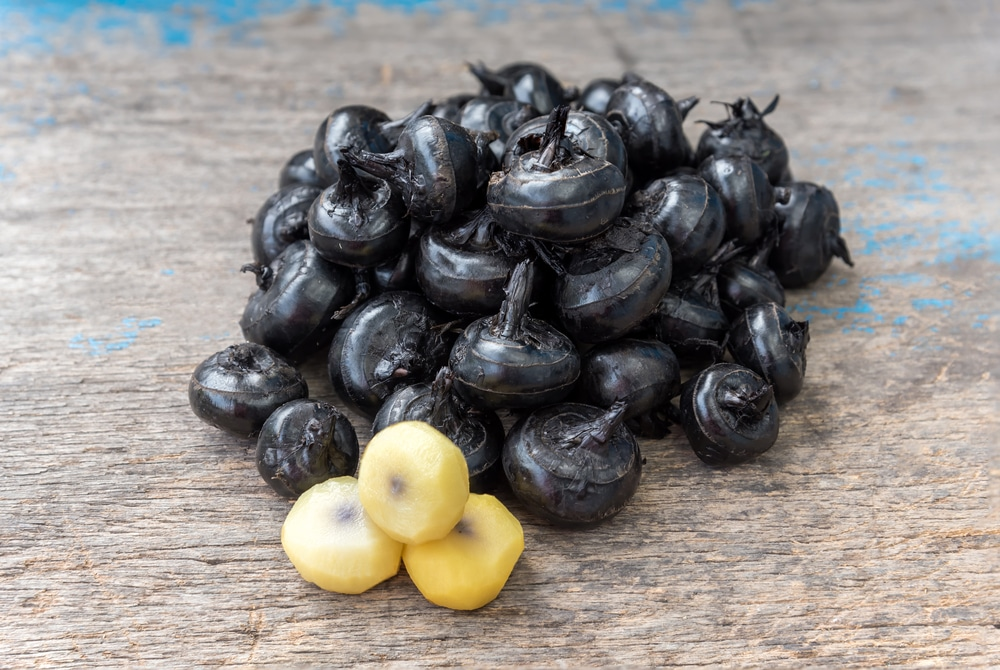
Using Your Homegrown Water Chestnuts
The culinary applications for your homegrown water chestnuts are nearly endless:
Fresh Preparations
- Slice thinly and add to salads for crunch
- Cut into matchsticks for slaw or coleslaw
- Dice and add to fresh spring rolls
Cooked Applications
- Add to stir-fries in the final minutes of cooking
- Include in soups and stews
- Stuff with seasoned meat or vegetable mixtures
- Pickle for a tangy snack or condiment
Popular Recipes
- Classic Chinese stir-fry with water chestnuts, bamboo shoots, and vegetables
- Water chestnut bacon wraps (rumaki)
- Water chestnut and mushroom stuffing
- Thai curry with water chestnuts and your choice of protein
Conclusion
Growing water chestnuts at home is a rewarding project that requires some specific conditions but is achievable for most gardeners. With patience and proper care, you’ll be harvesting your own crunchy, sweet water chestnuts for use in countless culinary applications.
Whether you’re growing in a garden pond, dedicated beds, or containers indoors or out, following the guidelines in this article will set you on the path to water chestnut growing success. Not only will you enjoy the satisfaction of growing this unique aquatic vegetable, but you’ll also have access to fresh water chestnuts that far surpass the quality of canned varieties available in stores.
Ready to get started? Gather your supplies, source some quality corms, and begin your water chestnut growing adventure!
